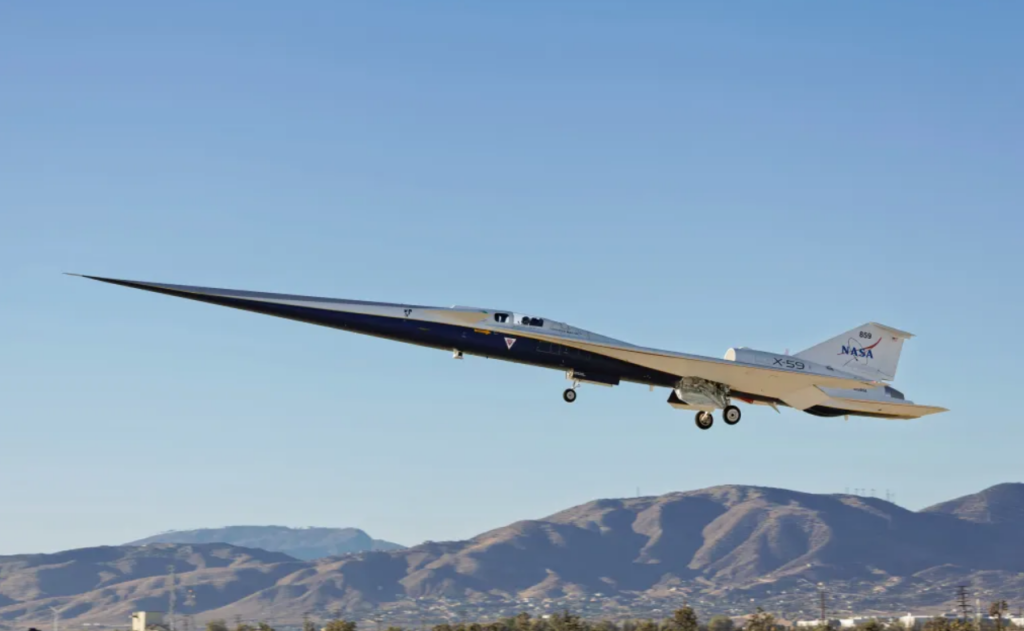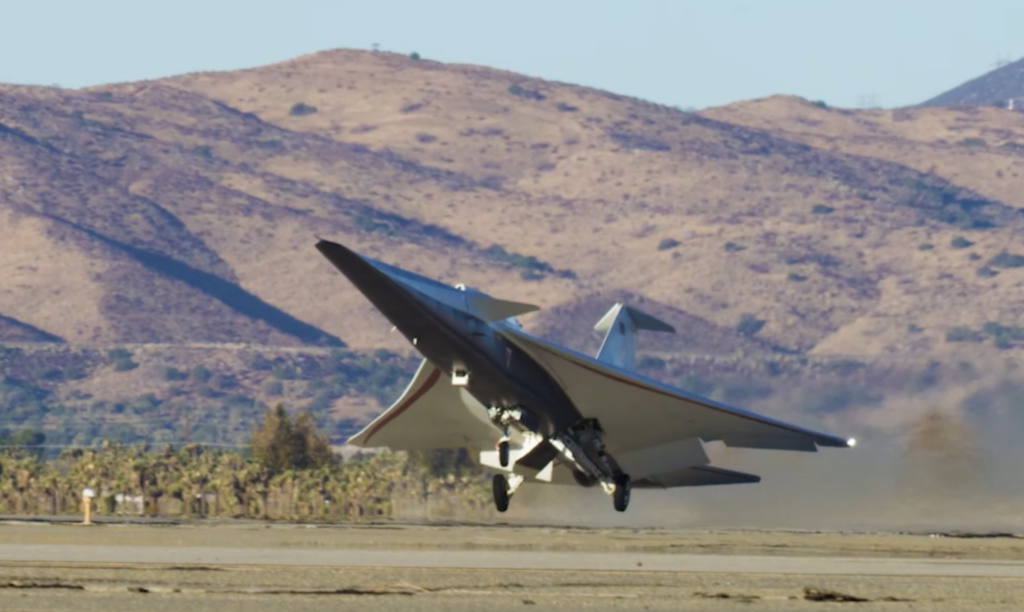Lockheed Martin Skunk Works and NASA Complete X-59’s First Flight
The Lockheed Martin Skunk Works and NASA X-59 jet completed its first flight on 28 October. The X-59 took off from Skunk Works’ Plant 42 runway in Palmdale, California and landed at Edwards Air Force Base (NASA’s Armstrong Flight Research Center) about an hour later. It reached the top speed of about 230 mph (370 kph) and an altitude of 12,000 feet as planned. This maiden flight was a careful “systems check” to verify the new aircraft’s handling and onboard instruments before proceeding to faster tests.
The X-59 is a one-of-a-kind 100-foot-long experimental jet built specifically to explore quiet supersonic flight. It has a 29.5-foot wingspan, a very pointed 65-foot nose and a special top-mounted engine intake. These design features – along with smooth, shockwave-smoothing contours – spread out and weaken the shock waves that normally make a loud sonic boom. Packed with sensors, the aircraft streams about 60 data channels (20,000 parameters) to ground controllers for analysis.

The goal of the X-59 project is to turn the explosive sonic boom of supersonic flight into a quiet “thump.” Lockheed engineers say the aircraft’s design should cut the boom’s intensity so much that people on the ground would hear only a muffled thump – about as loud as a car door closing. The X-59 is expected to produce an effective perceived noise of around 75 EPNdB in tests (since decibels are logarithmic, 75 EPNdB is roughly 16 times quieter). Reducing the boom is crucial because U.S. and international rules currently ban routine supersonic travel over land due to the noise’s disruptive impact. The X-59’s quiet-thrust technology could change that picture.
Data from this first flight and upcoming tests will directly support future supersonic travel. Over the next months, Lockheed’s Skunk Works will expand the X-59’s flight envelope, including the first supersonic runs, and NASA will fly chase planes and ground microphones to map the jet’s sound signature. The goal is to collect precise data on the noise reaching the ground and even survey communities on how they perceive it. Lockheed says this will provide “data-driven acceptable noise thresholds” for. If regulators see that the X-59’s boom is truly a quiet thump, rules may be eased to allow new supersonic aircraft in civilian (and military) use.
The X-59’s first flight is a major milestone for aviation technology. Lockheed Martin and NASA touted the event as proof of American aerospace leadership. NASA’s then-Acting Administrator Sean Duffy called the X-59 “a symbol of American ingenuity,” noting that quiet supersonic flight could “change the way the public flies”. Its success could open the door to a new generation of supersonic aircraft – from advanced transport planes to potential military applications – that can fly twice as fast as today’s airliners without shaking the windows below.

